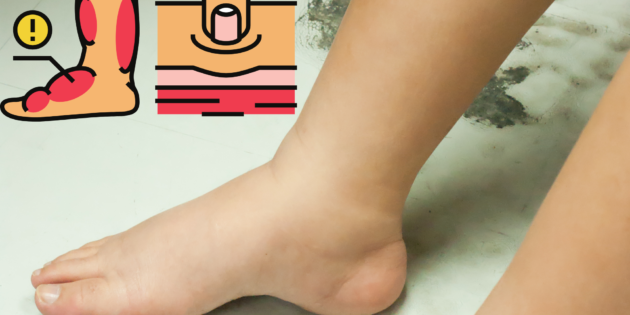Edema or swelling of the peripheral limbs, happens due to excess fluid getting trapped in your body’s tissues, causing puffiness and swelling. Edema may be a symptom of a severe underlying condition such as kidney disease, cirrhosis, congestive heart failure, vein damage, protein deficiency, or a weak lymphatic system. Mild cases of edema may be caused by lifestyle and dietary choices. You can also get edema if you are pregnant or have premenstrual symptoms. Edema may also be the side effect of certain medications, including steroid drugs, high blood pressure medications, and estrogens. Before you try to manage edema on your own, you should identify the cause.
However, if you suspect that you’re retaining water because of poor lifestyle habits or a bad diet, there are ways to manage edema naturally.
1. Lessen sodium in your diet
Your body only needs so much sodium for it to function effectively. Eating high amounts of salt can increase blood pressure, causing fluid retention. In a study on peripheral edema, which refers to the swelling in the lower legs or hands, researchers associate sodium with edema formation, stressing that limiting sodium helps to prevent edema. [1] Reduce sodium in your diet by carefully reading food labels. Look for foods advertised as “no salt added” or “low sodium.” And rather than adding salt to your dishes, look for healthier alternatives for adding flavors, such as garlic, spices, herbs, and a dash of citrus.
2. Boost blood circulation
You may have a job that keeps you seated or standing for long periods. Unfortunately, sitting or standing in one position too long can increase the pressure inside the blood vessels, causing fluid to leak into the tissues in your legs and feet. The result is puffy or swollen legs and ankles. To prevent this, keep your blood circulating throughout the day. Take a break from your desk and walk around the office or home. Exercising has been identified as being efficient in reducing edema of lower limbs. [2] Walking is one of the best exercises for edema because it promotes blood circulation and shifts the collected fluid.
3. Consume sufficient healthy sources of protein
Proteins help retain water inside the blood vessels so fluids don’t leak into the tissues, which may cause edema. Low protein consumption can also cause malnutrition, which increases the risk of edema. A study shows that dietary modifications, including decreasing dietary sodium and increasing protein intake, may help reduce fluid overload and the risk of edema. [3] The healthiest protein sources include beans, nuts, seeds, tofu, soy products, and lentils. Peanut butter and lentils are some of the best high-protein foods for preventing edema. However, it’s crucial to remember that too much protein is also unhealthy. Make sure you’re eating the recommended daily amount. See my video on protein needs HERE for more details on calculating your daily protein requirements.
To conclude
Remember, edema may be due to a severe condition. See your doctor if you have edema but also experience other symptoms such as difficulty breathing, chest pain, and shortness of breath.
All references from this site are found at this link: https://bit.ly/guerrillahealthref I keep this list updated.
Please feel free to share this article with friends you think may benefit from it.
Thank you for taking the time to read this. I’d be honored if you would share it with your family, friends, and followers by clicking the Like, Tweet, and Share buttons. If you are serious about improving your health no matter what your age or circumstances, and are ready to finally achieve optimal health and lose the weight you’ve been struggling with, then click HERE to check out my online Guerrilla Diet Wholistic Lifestyle Bootcamp for Healthy and Lasting Weight Loss.
If you are not already on my mailing list, where you will receive my weekly articles packed with scientifically based health and nutrition content, as well as many FREE bonuses and special offers, and much more, then click HERE to subscribe.
Thank You, 🙂
Dr. Galit Goldfarb

Leave A Response